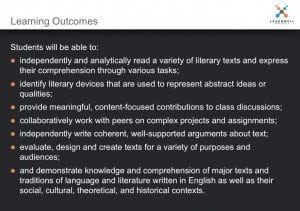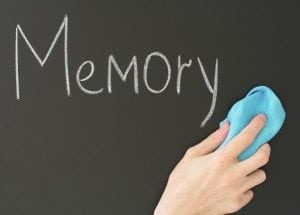[et_pb_section admin_label=”section”]
[et_pb_row admin_label=”row”]
[et_pb_column type=”4_4″][et_pb_text admin_label=”Text”]
Contemporary research and conversations highlight educators’ pedagogical style and use of technology as indicators of teacher effectiveness. While these are important factors in the teaching and learning relationship, at the core of teaching and learning is, well, a relationship. This educational union between educators and students has, and always will be, the central key to outstanding education. All relationships hinge upon communication. Employees crave supervisors who offer their vision and the manner in which it should be accomplished. Personal relationships stagnate when communication is weak. Likewise, educational relationships suffer when educators do not clearly communicate their expectations to students. Precision is compelling. Clarity and small steps make for miracles. Below are three practical steps educators can take to improve communication and move students beyond simple memorization.
1. Compose a great syllabus.
A properly used, well-constructed syllabus is a game changer! The research is clear and consistent: Educators who provide a useful syllabus have more successful students and are more effective teachers1. The syllabus is a living document that communicates to students throughout the course. It’s a gift that keeps on giving, so to speak. In addition to standard information, such as a course description and assignment dates, a great syllabus includes effectively written learning outcomes. Consider the metacognitive, task-specific learning outcomes illustrated by the image to the right. I’ll admit that incorporating metacognition and tasks with learning outcomes is ahead of current research, but I believe the research will eventually catch up. The metacognitive component addresses how students will be expected to interact with content. The task-specificity fits the way in which students tend to organize their academic “to-do” lists. Let’s deconstruct the first bulleted learning outcome to unravel and reveal just how instructive one concise statement can be. In addition to specifying the task reading, the students are:
- Made aware that they are responsible for reading “independently,” or outside of class, as.
- Opposed to relying only on classroom interactions, as is common for many students.
- Explicitly instructed to read “analytically,” thus potentially overriding their natural tendency for recall reading.
- Specifically told that reading in this class involves multiple texts.
- Informed as to what they will be expected to do with the readings, “express their comprehension through various tasks,” which the teacher can specify as needed.
Students armed with clearly stated expectations are in a much better position to accurately interpret the outcomes they need to work toward and to calibrate their proximity to meeting the outcomes before they are called upon to demonstrate them on a task or test.
2. Model deep thinking while teaching.
Educators live in their own version of Lake Wobegon, storyteller Garrison Keillor’s fictional town in which everyone overestimates their characteristics and abilities. It seems that all faculty believe they teach critical and deep thinking skills. This is despite data from the National Survey of Student Engagement that suggest otherwise. On The LearnWell Projects’ professional development post-event evaluations, teachers regularly acknowledge that they realize they’ve not been teaching deeply. Simply slapping Bloom’s Taxonomy on a syllabus and telling students to aim for the higher skills is not teaching – that’s called telling. Including essay exams or requiring students to use advanced thinking skills on assessments is testing for the skills, not teaching them. Educators who model deep interactions during class give their students an advantage among their peers. Why is this so important? Because in addition to taking notes during class, students absorb the level(s) of interaction in which the professor delivers the content. Later, when students study on their own, they apply the same level of thinking that was exampled during class. Hurried educators who spend the entire class time covering basic points wind up producing the very thing they detest: students who think about the right stuff, but on a shallow level.
3. Allow students to do the work.
Consider this example: A teacher asks Stephen to answer a complicated question. After a few guided attempts, he is unable to produce the correct response. The teacher, perhaps trying to pacify his own discomfort with the situation, steps in and solves the problem for Stephen and the class. This teacher may have shown the class how to get to the correct answer, but consider if he had left the unanswered question as a cliffhanger? Students then would have had to struggle on their own, maybe even overnight, to come up with the answer. What if the teacher revisited the question throughout the week, explicitly directing the class to continue mulling over the problem? What if he allotted a few minutes for the students to work in groups to think about the question and potential answers? The imagined scenario provides a healthy balance of cognitive tension, support and opportunity. Furthermore, it is a more realistic version of the nexus between thinking and learning. Problems aren’t solved in fifty minutes. Some challenges require multiple visits. Sometimes – or, more likely, most of the time – solutions arise when people are not actively thinking about a problem. Students who experience the imagined scenario will not only become more persistent thinkers, they will be more likely to accurately apportion their time for academic tasks. I hope that these two articles help students and educators work together to move beyond memorization and develop the rewarding teaching and learning relationship that educators envision and that students need. You can view Three Things Every Student Must Know to Move Beyond Memory-based Learning at the following link: http://bit.ly/1iwO0xN
Reference(s)
- O’Brien, Judith G., Barbara J. Millis and Margaret W. Cohen. The Course Syllabus: A Learning-Centered Approach. San Fransisco: Jossey-Bass, 2008.
[/et_pb_text][/et_pb_column]
[/et_pb_row]
[/et_pb_section]



22 comments
Dorie AuCoin
Again, Leonard, thanks for the wonderful research on student learning and for sharing you good work so frequently!! I’m using your research methods with undergrads as well as training materials for the Graduate Assistants who work with us in Learning Assistance. It is invaluable in getting them prepped to work with our “under-learning” students.
leonard.geddes@lr.edu
Hi Dorie,
Thanks for your comment. I’m happy that you find this blog and the resources useful. That’s make the late nights worthwhile!
On another note: I don’t believe I’ve ever seen the term “under-learning” before? Is this specific to your institution or have you seen it used in other literature.
Bonnie Lasher
I fully support #3 Let students do the work. All too often, we are quick to show the solution but there’s a great deal of power in driving students to think critically and deeply before arriving at the solution. No instant gratification there!
leonard.geddes@lr.edu
Thanks Bonnie, I like it. We should provide instant feedback, but not instant gratification. Growth is in the struggle!
LuAnn Martin
This article hits the nail on the head! Silence tends to be a problem with instructors, myself included. Over time I was able to overcome the barrier of silence that kept students “thinking.” It is part of critical thinking that needs to be incorporated in every classroom today. Change is difficult for many but it can be done with practice. Great article!
Maggie Soff
My syllabus is department provided; however, it does provide SWBAT information similar to the sample shown. I have taught ENC1101 (freshman comp) in the past, and I currently teach developmental reading and am the reading specialist in my school’s Learning Commons. Whether teaching in the classroom or the Learning Commons, I do a lot of modeling through annotated samples of my own work as a student. I share Bloom’s with everybody I can as well as the term “metacognition.” I generally have the ThinkWell-LearnWell Diagram nearby for reference for class discussion and as I create some of my own assignments. In the fall, my developmental reading students applied it to their growing critical thinking skills to texts that I used in ENC1101. They remained engaged – I know because most of them came to class every night 7:00 to 8:15. The ThinkWell-LearnWell Diagram has helped me become a better teacher and my students to become better thinkers! Thank you, Leonard!
leonard.geddes@lr.edu
Hi Maggie,
Great job empowering your students! This affirms my believe the if educators are given truly effective tools, students will respond! Do you mind sharing how you use the diagram to create assignments?
Vikki
We all hope that we allow students to think or ponder over a question. That awkward silence that exists while students “think” is what we need to learn to love. I agree that we should give them time to think, make them delve deeper than what they are accustomed to doing. It is difficult, but so valuable when we give students time to think.
Marcy Marinelli
Great article Leonard! I agree with all your points, especially that we need to model our own metacognitive strategies with our students. I find that when I talk to my students about how I think about a problem or issue, it gets them thinking in a deeper, more metacognitive way. I’ve found that some students are more naturally metacognitive – maybe it’s a personality variable? – but others need to be taught how to be more aware of their own thinking. Keep up the good work!
leonard.geddes@lr.edu
Hi Marcy,
Thanks for your post. Research shows that people engage in metacognition in many areas of life starting in early childhood. I agree that some students seems more aware of it than others. I have a great illustration that shows the progression from metacognitive awareness to metacognitive control. I will add it to my list of articles to write. You may want to follow the blog — by checking the boxes at the bottom of the article — so that you receive notification when articles are posted.
Jennifer Gossett
I’m interested in the conversation on syllabus design, learning outcomes AND how those outcomes are assessed throughout the semester. Would it be possible for you to post some examples of learner centered syllabi?
Beth
Hi TyAnn,
A graphic syllabus is a neat idea. Would you mind sharing more details? Thanks!
leonard.geddes@lr.edu
I’d be interested in seeing this as well.
Joan
I could not agree more with this article. As a Tutor Coordinator, I train tutors to give students time to think critically about problems. It is a difficult skill to master for tutors and teachers, but once you have experienced just how much it works, you will never go back! I will be sharing this article during our next training workshop. Thank you!
leonard.geddes@lr.edu
Joan, you are correct. This skill is very difficult to master. I hope the article resonates with your tutors. Keep us posted.
TyAnn
I have been exploring graphic syllabi to enhance student learning. I am not a graphic designer so I sought out colleagues in art, design, PR, etc. for assistance. It is not just eye-candy, either. 😉 As a former middle school teacher I learned SWBAT (the student will be able to) as an undergrad…
leonard.geddes@lr.edu
I’ve never heard of it called “SWBAT.” I like it. I am a firm believer in getting students to actually express what they are able to do because many of them believe they “know” the material in their head, thus overestimating their knowledge. Forcing students to articulate the precise outcomes they have obtained while studying is a very effective way of helping them more accurately judge their knowledge. The ThinkWell-LearnWell Diagram is a great tool that enables students to perform this crucial task independently.
Susanna Wassom
Allowing students to do the work seems like a no-brainer, but honestly it is uncomfortable for the instructor for the question to not be answered. I find myself doing exactly what your article stated. I end up answering the question myself. Leaving it unanswered for the class to ponder is a great idea. I also am interested in making my syllabus better by changing my learning outcomes. I realize that the current learning outcomes I list are very abstract and most students probably don’t realize if they’ve even met them or not.
leonard.geddes@lr.edu
Susanna, thanks for the reply. You are not alone. It takes a kind of inner quieting and trust in the process that many educators have not had the opportunity to develop. I became comfortable with it while obtaining my counseling degree in grad. school. I recall practicing asking questions and then waiting patiently, without interrupting or allowing my internal thoughts to become a disruption, for people to respond. I little advice: when you do attempt the “cliff-hanger” method in class, you may want to have specific instructions about how your students should ponder the question/problem. Another approach is to use the think, pair and share technique toward the of class or as an out-of-class assignment.
In regards to the learning outcomes, I cannot stress the importance of learning outcomes. Keep in mind, however, that students will not automatically look to the learning outcomes. You will need to direct them to the outcomes and then perhaps explain their utility, and possibly revisit them periodically. Good luck in your new bold moves!
Let me know if I can assist.
Amy
Great point about the syllabus. I struggle with having students refer back to the syllabus fews into the term. I mention the importance in class but do not feel that students are reading the syllabus beyond the first week. I do have students create sample test questions at the different stages of Blooms in class to model the type of study questions to create during independent study.
Teresa Milligan
That first point is so important. The syllabus is too often overlooked as a way for instructors to reflect from day to day or semester to semester. Writing course outcomes and student learning objectives is not a popular topic for faculty development, but we need those effective end points to work backwards from. Unfortunately, our faculty – who are experts in technical fields, not education or writing – don’t receive any more instruction than a list of acceptable verbs to use. What’s more, it’s too often underutilized by students. When students come to me for resume help, the syllabus should be a wealth of field-specific verbs and terminology to generate content. More often than not, students have to dig to the very back of their folder to find it, if they’ve kept it at all. There is so much potential in this one staple document, and we need to tap that potential to its fullest extent.
Leonard Geddes
Well said! Also, I always encourage faculty to actually point out the learning outcomes, and explain their importances and usefulness to students because students tend to only look for the assignment dates. They miss the information that helps them calibrate and assess their learning.